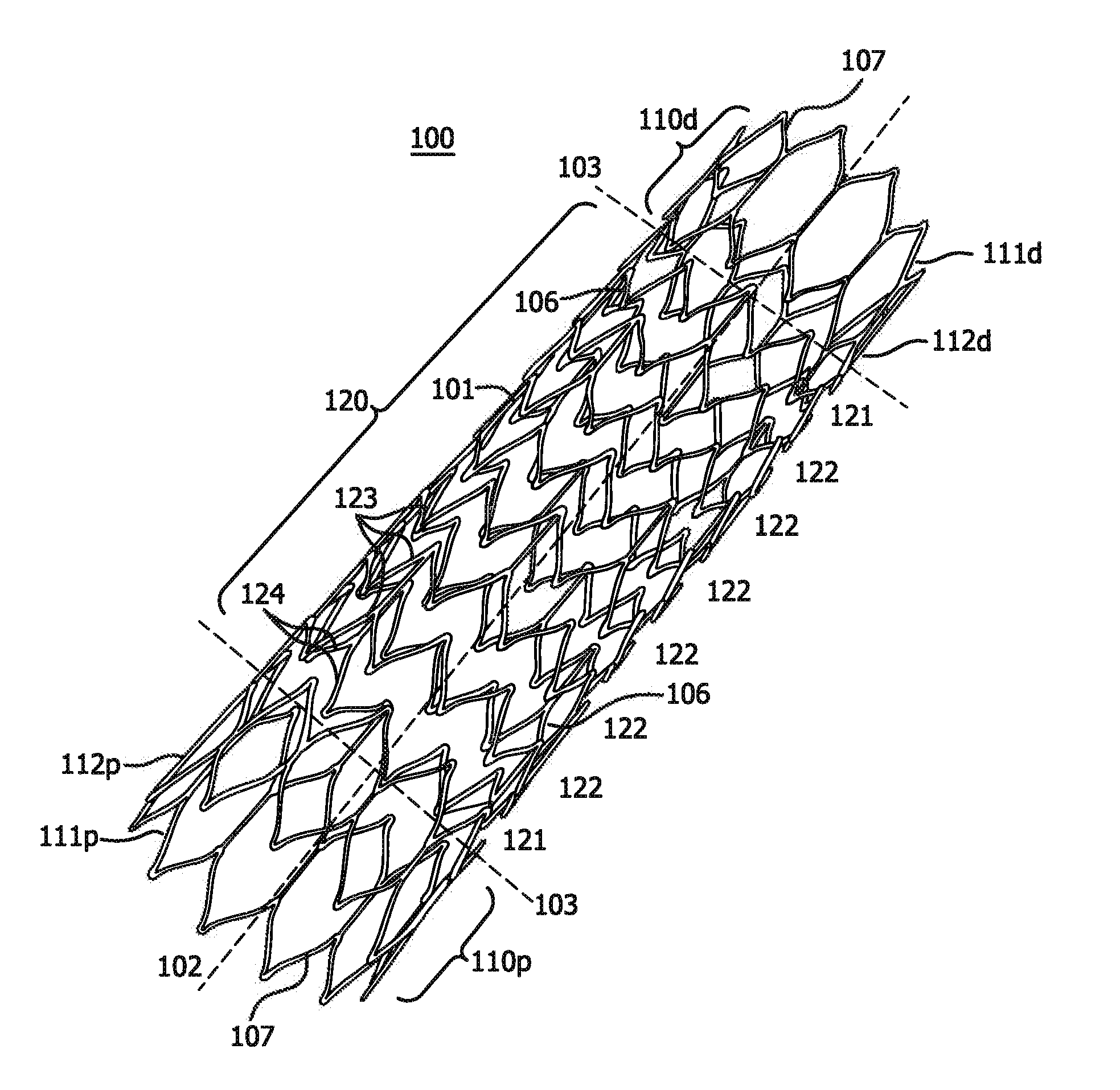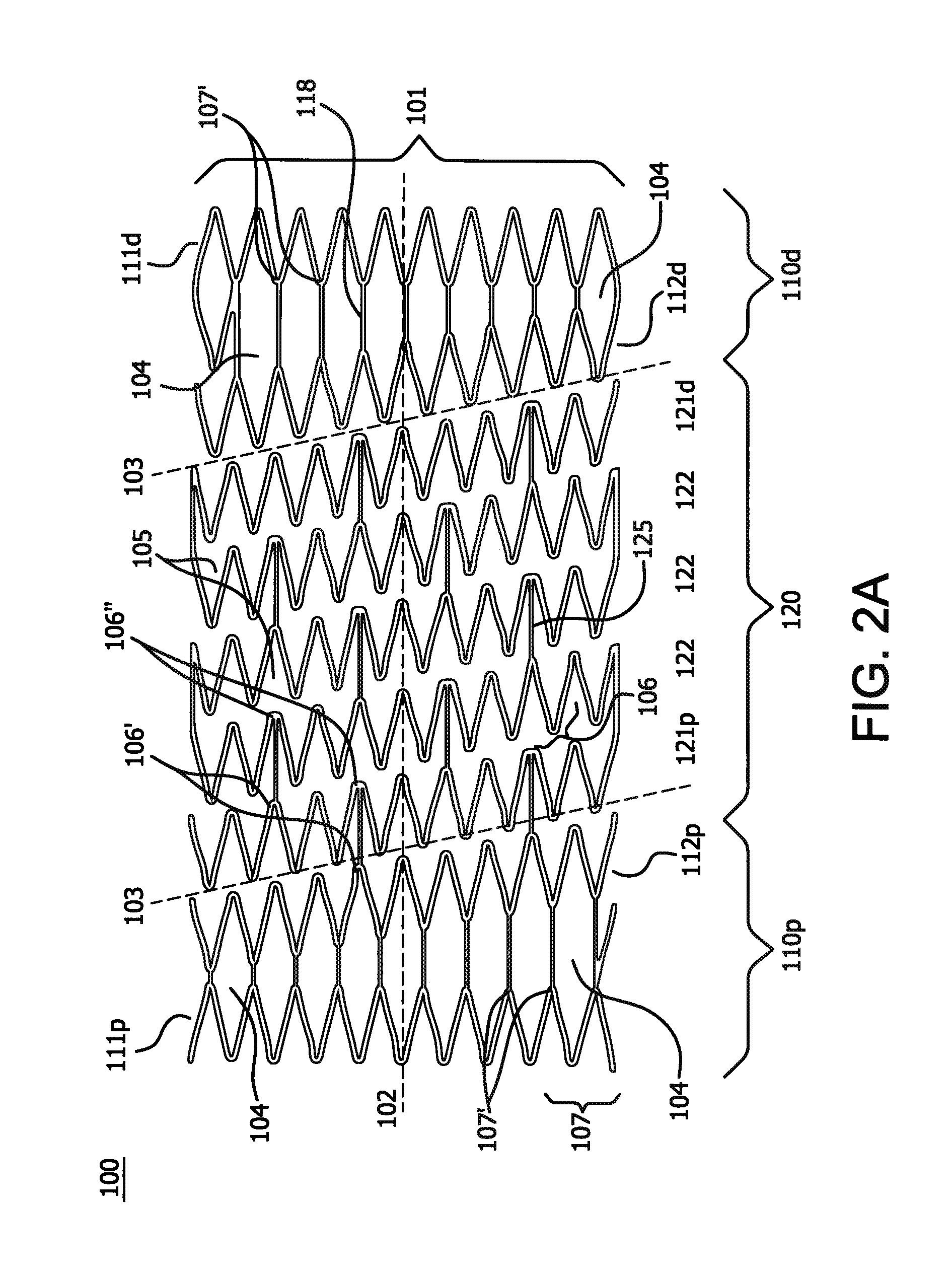Stent
a technology of stents and stents, applied in the field of medical implants, can solve the problems of clinically significant narrowing of arteries, increased size and thickness, or even complete occlusion, and achieve the effects of reducing profile, reducing profile, and reducing profil
- Summary
- Abstract
- Description
- Claims
- Application Information
AI Technical Summary
Benefits of technology
Problems solved by technology
Method used
Image
Examples
example 1
[0136]A stent is prepared using a commercially-available medical grade nitinol tubing. The composition of the nitinol is selected so that the finished stent frame, prior to subsequent processing as described in examples 5 and 6 below, has an active austenitic transformation finish temperature of about 20° C. or less. The tubing is laser cut to remove material from the tubing and to provide a structure as shown in FIGS. 2A and 2B with 10 apices and a deployed diameter of about 8 mm, a thickness of about 0.15 mm. Slag, which can be formed during laser cutting of nitinol, is removed by mechanical or chemical techniques to provide a smooth exterior surface. The laser cut tube also is electropolished.
[0137]This self-expanding stent device is diametrically compacted at ambient temperature. Compaction is effected using a collet or iris type of diametrical compaction device, such as taught by U.S. Pat. No. 6,629,350. The compacted stent device is inserted directly from the compaction device...
example 2
[0138]The stent with 11 apices and 10 mm deployed diameter prepared in accordance with a configuration illustrated in FIGS. 6A and 6B and substantially as set forth in Example 1. This time, however, the self-expanding stent device is diametrically compacted at a reduced temperature of about −10° C.
example 3
[0139]A lattice of the type shown in FIGS. 7A and 8B with square-shaped openings is prepared. A mandrel is wrapped with an ePTFE film with a discontinuous FEP coating to a thickness of approximately 0.05 mm. The film-mandrel assembly is placed into an oven at 320° C. for 12 minutes to bond the layers. The assembly is removed from the oven and allowed to cool at room temperature to provide an ePTFE tube. Using a CO2 laser, a pattern of regular square openings is cut into the tube. The openings are square-shaped with a size of less than about 0.5 mm. The width of the lattice segments is greater than about 0.05 mm (see FIG. 7B). The prepared square shaped lattice is placed in a convection oven set at 370° C. for 12 minutes. The material shrinks during heating to form squares that are approximately 0.5 mm diameter inscribed circle and lattice segments that are approximately 0.05 mm wide.
PUM
 Login to View More
Login to View More Abstract
Description
Claims
Application Information
 Login to View More
Login to View More - R&D
- Intellectual Property
- Life Sciences
- Materials
- Tech Scout
- Unparalleled Data Quality
- Higher Quality Content
- 60% Fewer Hallucinations
Browse by: Latest US Patents, China's latest patents, Technical Efficacy Thesaurus, Application Domain, Technology Topic, Popular Technical Reports.
© 2025 PatSnap. All rights reserved.Legal|Privacy policy|Modern Slavery Act Transparency Statement|Sitemap|About US| Contact US: help@patsnap.com



